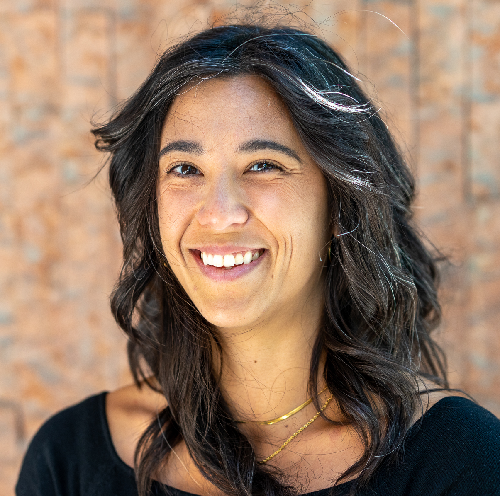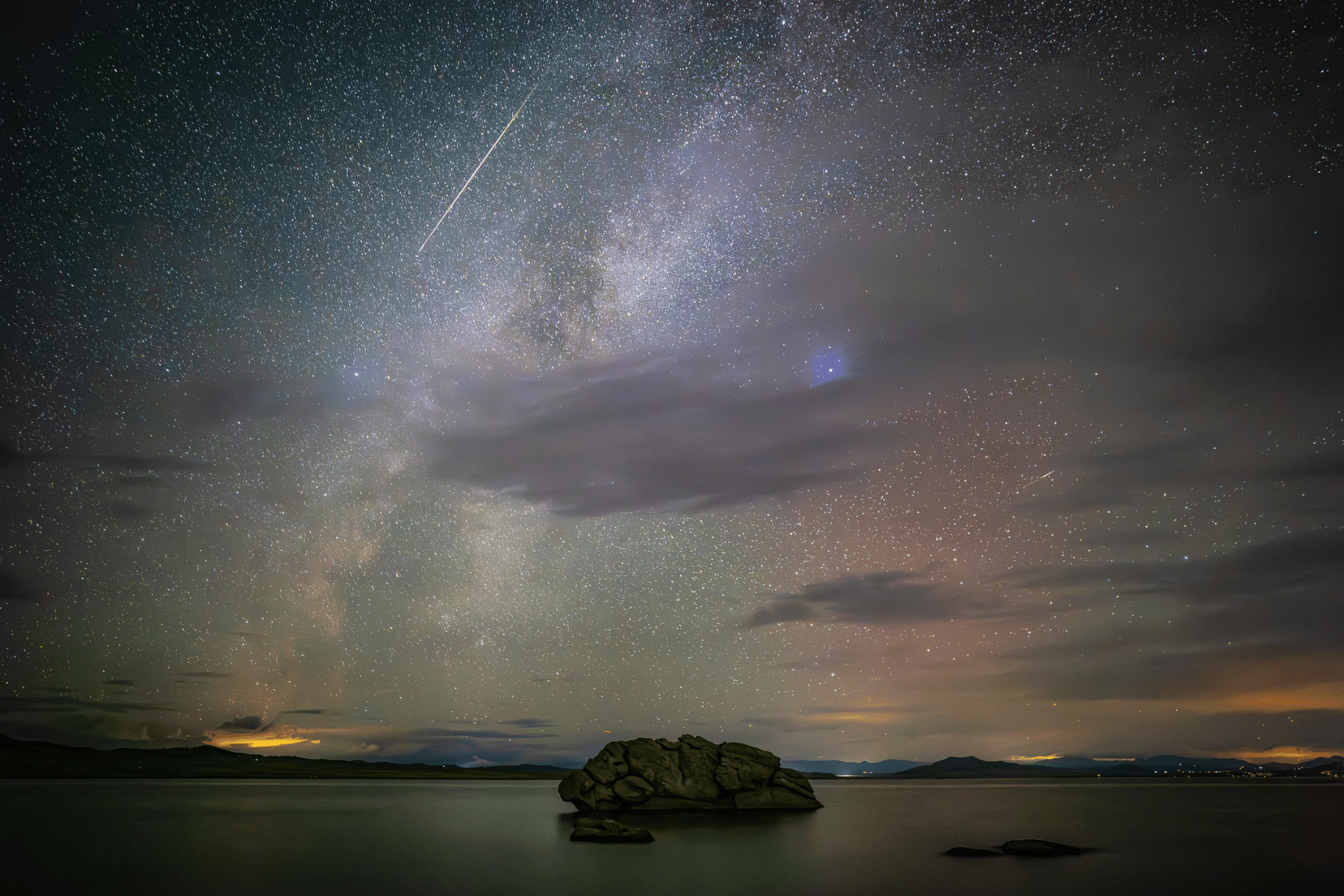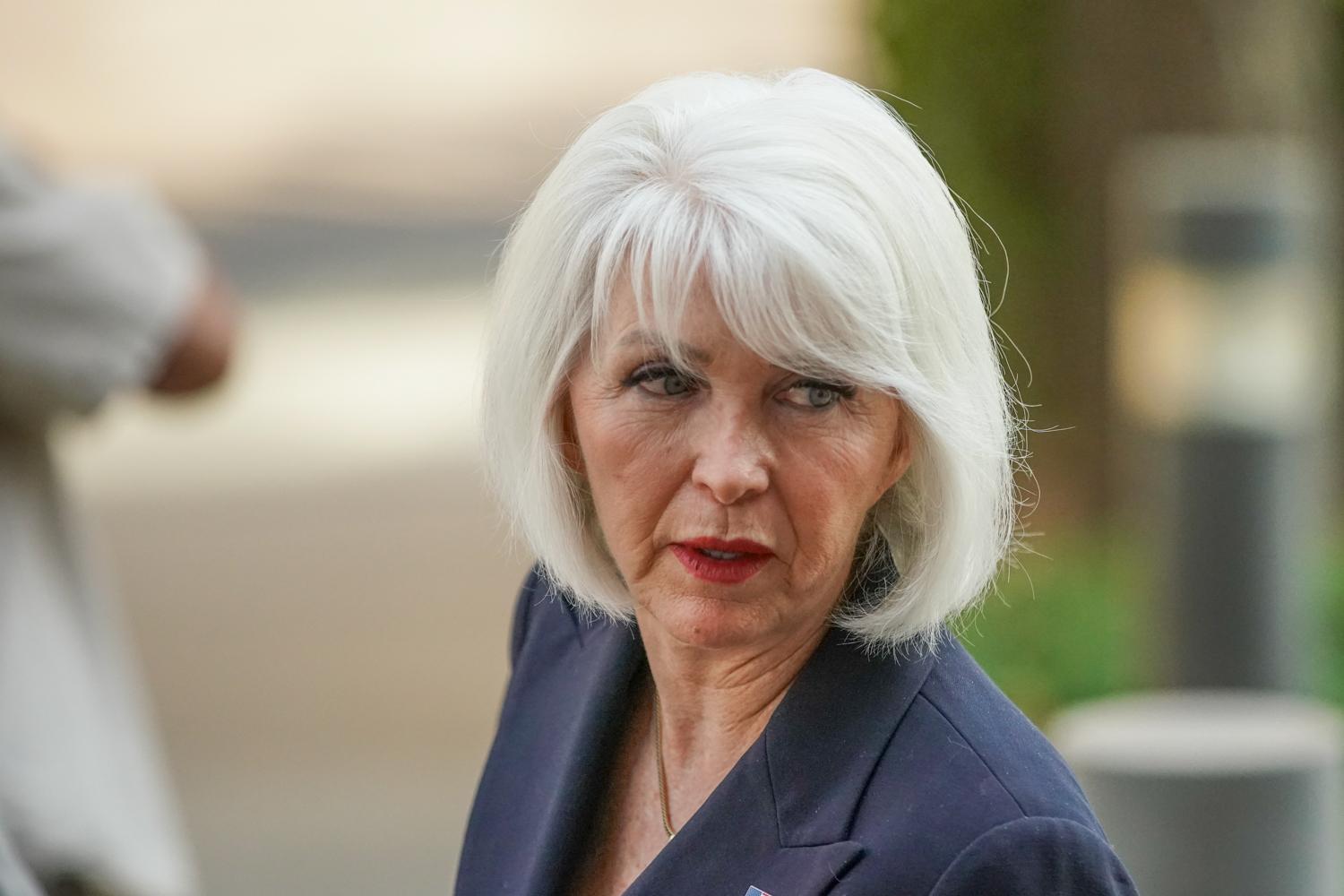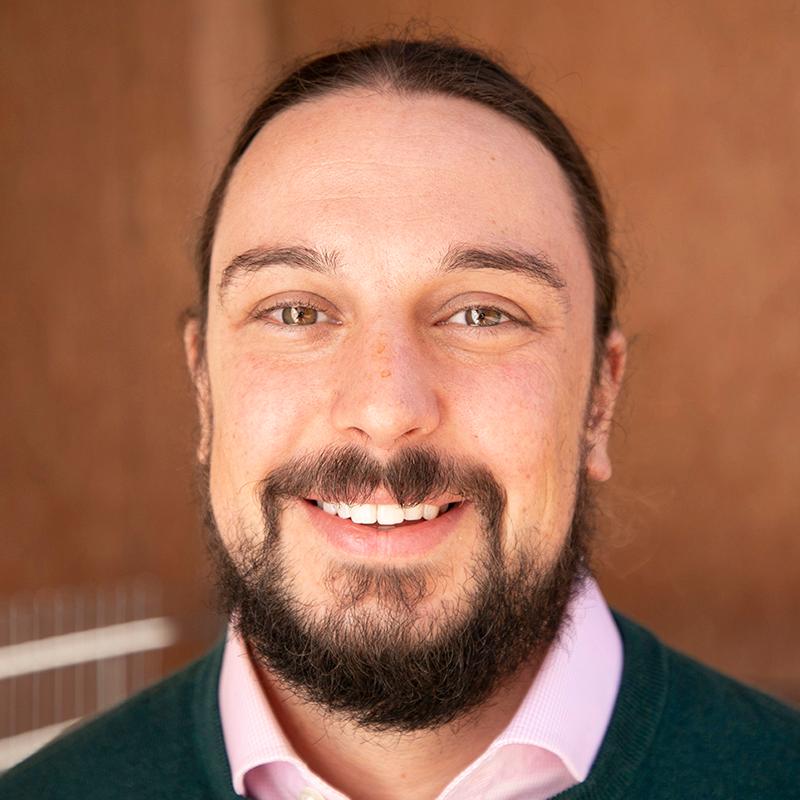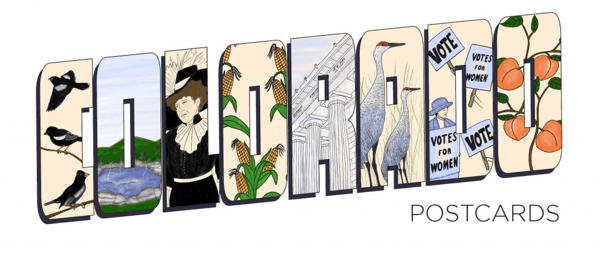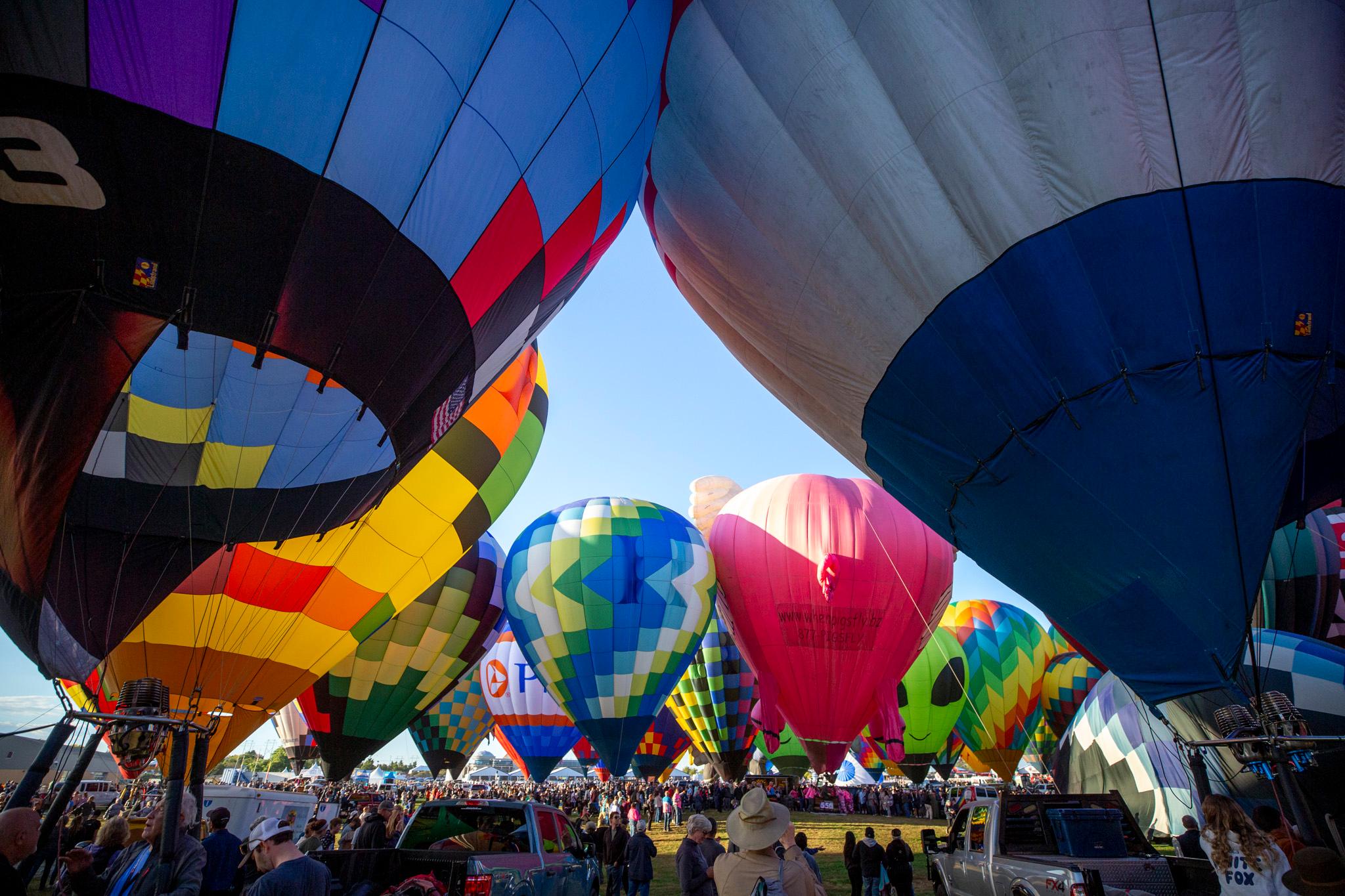
Under a dark desert sky still scattered with stars, hundreds of pilots ready their hot air balloons on a grass launch field tucked away in a New Mexico river valley.
In the darkness, stadium lights and headlamps guide the way. But in just a few hours, these crews will launch 543 balloons at once and turn the coming dawn into a collage of color and joy — a painting in motion.
“Looking in the sky is like watching a Jackson Pollock painting,” Pagosa Springs pilot David Bair said. “These balloons are everywhere — just splashes of color. And you can’t take it in, it’s too much.”
Many of the crews, representing 41 states and 12 countries, traveled thousands of miles and woke up as early as two in the morning to pack up trailers, fill coffee mugs, and reach the park in time to prepare for the world’s largest hot air balloon launch — Mass Ascension at the Albuquerque International Balloon Fiesta.
Before 6 a.m., Bair’s crew, which includes his wife Jessica, his son Andrew, and his daughter Erin, is already gathered on the field.
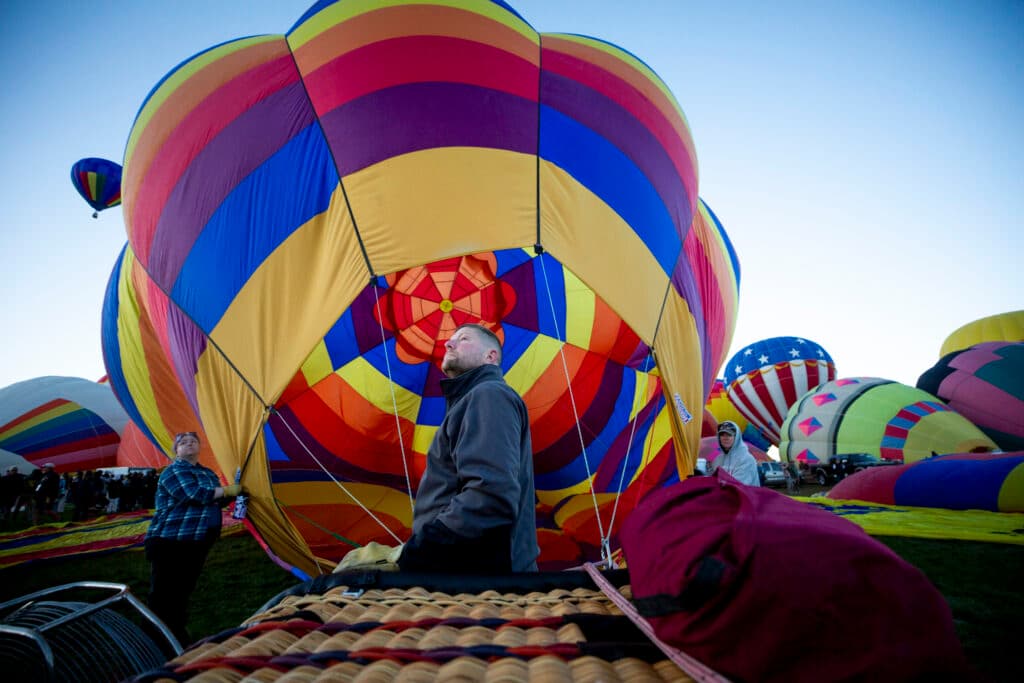
For balloonists from the Centennial State, the Albuquerque fiesta is as much about community as it is about flight. Colorado’s crews, which include 20 pilots this year, bring a little mountain air — and a lot of camaraderie — to the desert. With only 3,000 licensed balloon pilots in the nation, many of them know each other.
“The kids have grown up with these families,” said Jessica Bair. “We've been through marriages and deaths and divorces and raising kids. We can go anywhere in the world, and if there’s a balloonist there or a friend of a balloonist, it’s an instant connection. We have friends here from England, Belgium, Spain, France. It’s more than a hobby; it’s a lifestyle really.”
Pilots come with spouses, children, or lifelong friends serving as crew, catching balloons at landing zones, driving chase trucks through desert roads, or simply cheering from the field.
“The thing that keeps us in ballooning is the friends and family. We consider Balloon Fiesta to be kind of a family reunion. We'll come and see hundreds of our best friends every year,” Bair said.
And they commune in the New Mexico desert because of an exciting weather phenomenon.
“What makes Albuquerque really the place that everybody wants to fly is the Albuquerque box,” said Fiesta spokesman Tom Garrity. “That's a phenomenon that takes place because of the Sandia Mountains to the east and the Rio Grande to the west.”
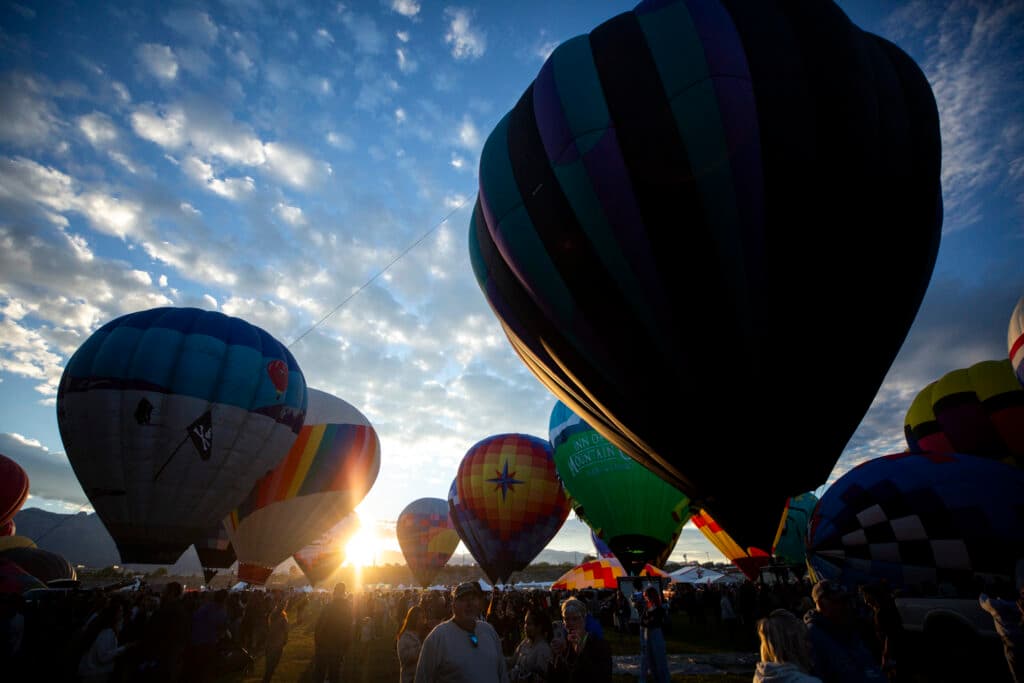
The box happens because of the placement of the Sandia Mountains and the Rio Grande. Winds between the mountains and mesas form a gentle cube-like pattern. They push balloons one direction near the ground and the opposite way a few hundred feet up, making it — somewhat — easier to control the flight.
“It’s a common question,” Bair said, “‘How do you steer a balloon?’ The answer is you don't. You follow the wind wherever it takes you.”
At 6 a.m., Bair and his father, who is also flying a balloon this year, head to the pilot’s briefing. There, meteorologists give them information for the day and the all clear for flight. Then, teams scatter across the field to their launch sites.
Bair and his family have been part of that tradition for decades. They began volunteering after the event first launched in the 1970s as a radio promotion.
“The first Balloon Fiesta had 13 balloons, and it took off downtown at one of the shopping malls,” Bair said.
He hasn’t been able to get enough since.
“The flying part of ballooning provides a very unique challenge. The nice thing is all the cares of the world have to go away. You can't worry about what paperwork you have to do or what's on your shopping list,” he said. “You need to be dialed into flying, and that creates its own sense of peace.”
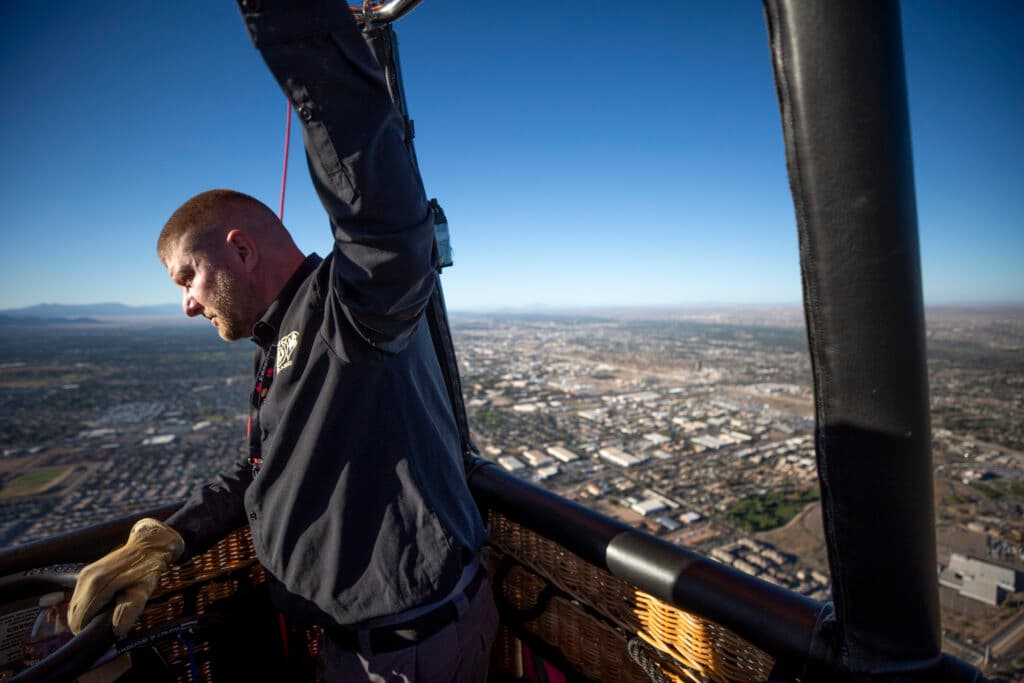
As stars give way to light, tens of thousands of spectators pour onto the field. They wrap themselves in blankets, drink hot chocolate, and set up lawn chairs. The nine day festival draws more than 800,000 people on average each year. On any given morning, as many as 80,000 visitors are on the field — more than the capacity at Empower Field at Mile High — waiting for the magic to take flight.
As dawn nears, the field hums with motion. Soon, crews will carry out the three phases needed to get their balloons launched into the sky.
First, they’ll rig and check their hot air balloon, connecting the envelope (or what us average folks might call the balloon part) to the gondola, aka the basket. Next they’ll use a giant fan to inflate the balloon with cold air.
Then comes the most iconic part — heat.
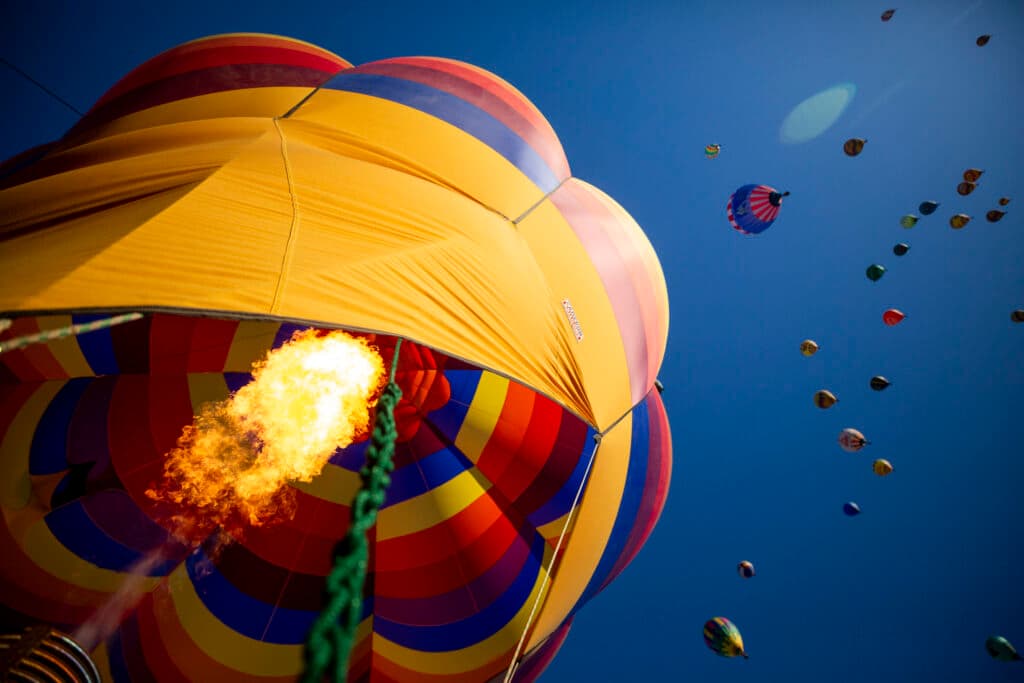
“The third phase is hot inflation, where we actually light the burners,” Bair explained. “We heat the air inside, and that's what causes the balloon to stand up.”
Propane burners roar to life, dotting the field with their flame. The air shimmers with heat and anticipation. Suddenly, the balloons — these giants of joy — start to wake up. Stand close enough to the propane burner, and you feel the warmth on your skin and see the flush on the pilot’s face.
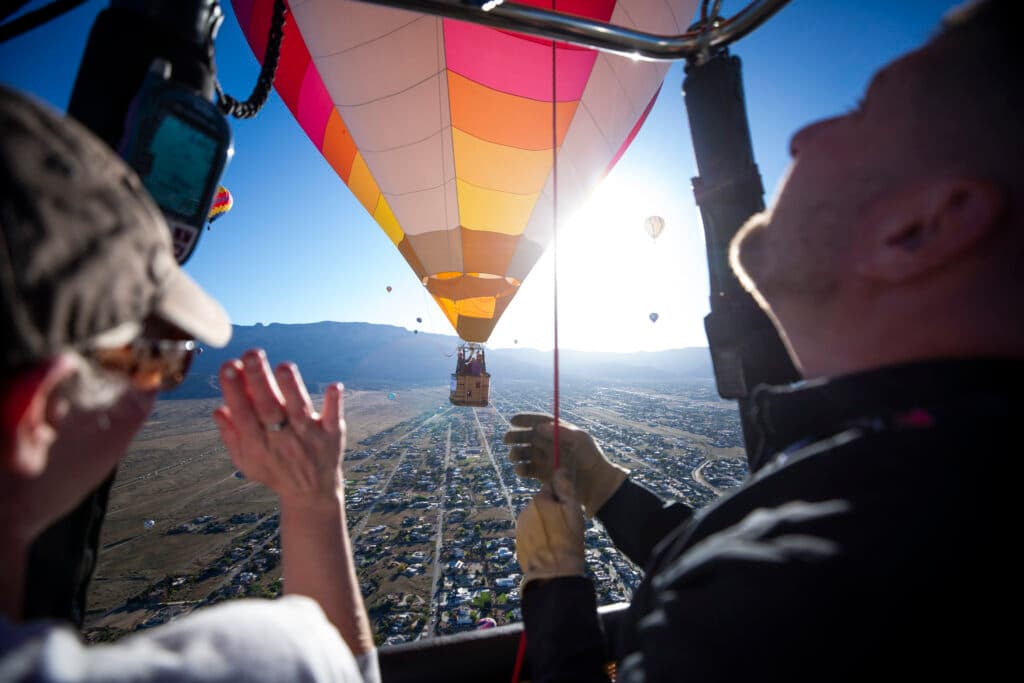
“Imagine the excitement that you might have seeing one balloon or two or three. And on this field, we're going to see over 500 balloons fly,” Bair said. “They’re everywhere, just splashes of color, and they're all unique, and they're all going different directions, and you just can't take it in, it's too much.”
Bair has two balloons, Bairly Awake and Miss Autumn — which is shaped like a pumpkin, something that attracts kids with a Pokemon-like mission to catch all the whimsical shapes (like a cow) and collect balloon cards from each crew.
“I see a teddy bear balloon,” 11-year-old Sadie Hennrichs said. She has a few she hopes to check off her list. “I see a lot of colors, and I’m excited to see the duck, capybara, and ghost.”
That duck — it should be noted — is wearing scuba gear.
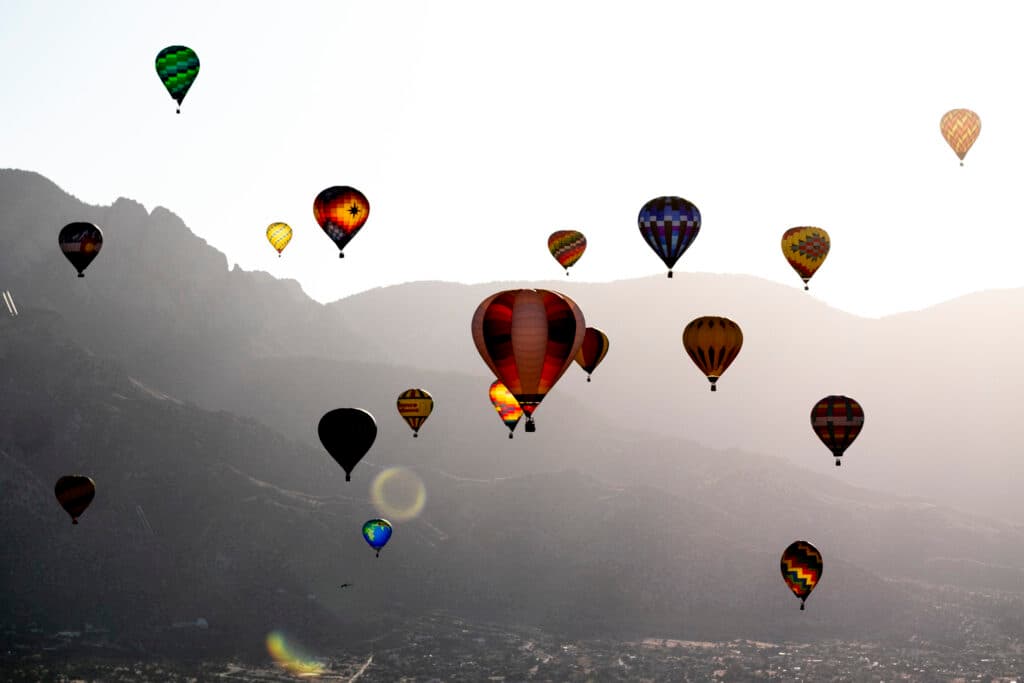
Mass ascension
The precision of the event is timed to the second. At 7 a.m., the national anthem plays, a flyover of historic planes called the Chile Flight zooms overhead, and pilots ignite their burners in unison, washing the field in a warm glow.
Launch directors, known as zebras, wear black and white outfits to stand out on the field. They blow their whistles to give the all clear, and it begins.
Slowly, one by one, balloons rise into the dawn, and a wave of color — reds, yellows, blues — ripple and twist skyward until the horizon looks like a work of art.
“When I hit the burner, it's always a look of a little shock, wonderment, a twinkle in their eye, screams of joy,” Marissa Meyers, who also hails from Pagosa Springs, said. “Kids just become truly awestruck.”
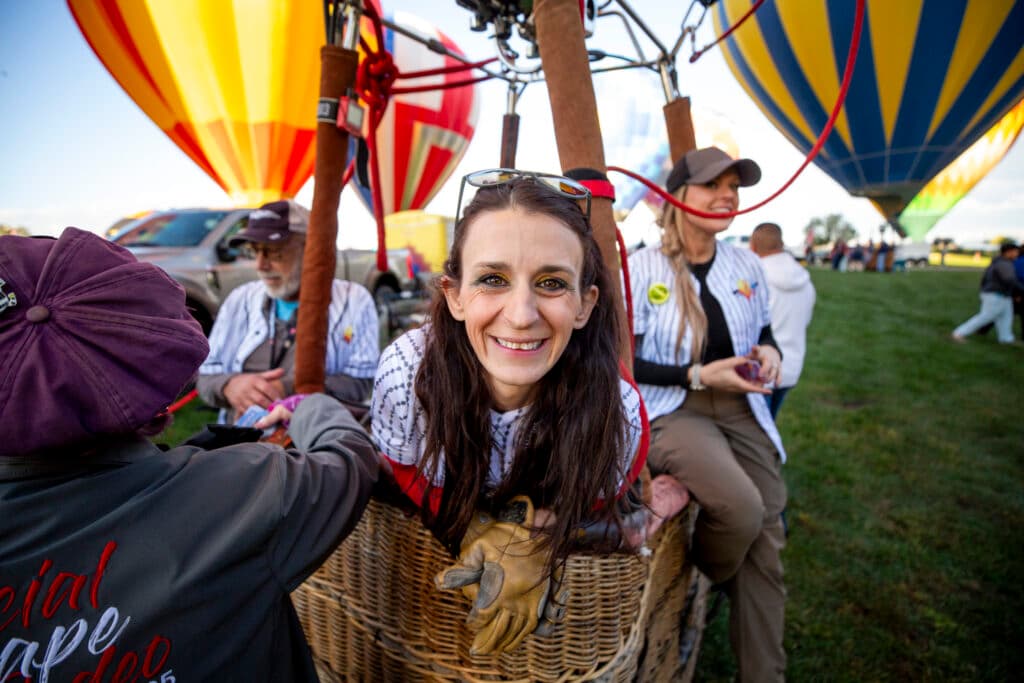
CPR News spoke with spectators from as far away as Mumbai and New Zealand and as close to home as Colorado Springs, showcasing the culmination of cultures that come together for the spectacle.
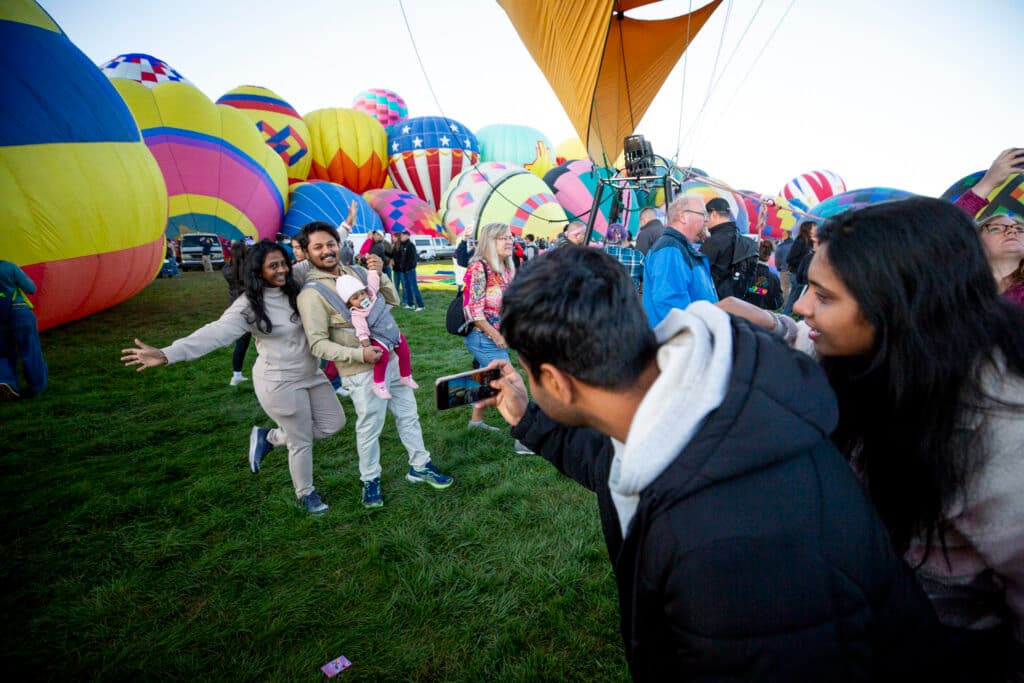
“The great thing about Balloon Fiesta is that it's a place where the world has come to balloon for 53-plus years,” Garrity said. “Political differences really kind of subside, and pilots are looking out for one another, chase crews are keeping an eye on each other. There's just a spirit of comradery.”
“I think the county is at a very interesting point in history,” Lily Burke, who traveled from Los Angeles to take photos of the event, said. “It’s kind of a boiling point; there’s a lot of tension. But when you’re surrounded by things that are so much bigger than you, it’s difficult to want to disagree with the people around you. Everybody's coming together from so many different places, and it doesn't really matter where you're from. We all just get to share this experience.”
CPR News joined Bair’s team with one of us in the basket and one of us with the ground crew. Up in the air, we can see for miles as the sun climbs above the Sandias.
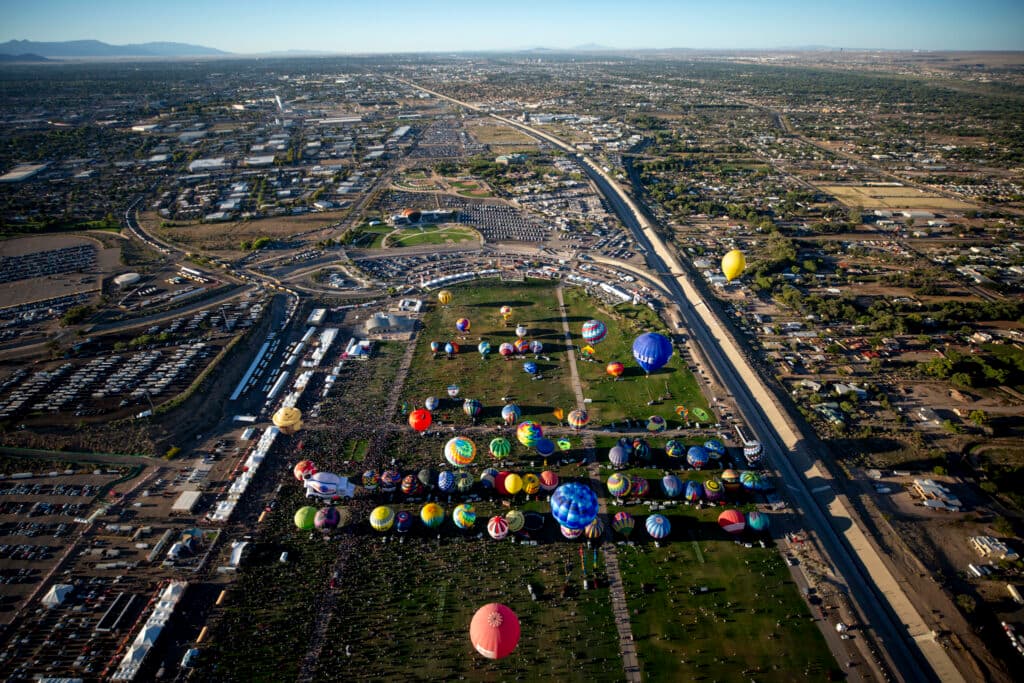
“We're flying over Albuquerque, New Mexico, with 500 of our closest friends,” Bair said. “There's quite a bit of balloon traffic today, and the winds are going just about every direction imaginable. Right now we're headed east up into the Northeast Heights, and there're a lot of balloons up there, but there're a lot of great landing spots.”
On the ground in the chase truck, Jessica, Andrew and Erin exit the field and begin the hunt.
“We've got a Glimpse app, which is really just a GPS of where the balloon is and where we are,” Erin said. “And so we will follow it to see where he lands and, and if we're really good we'll be there before he lands.”
We follow Bairly Awake through town. When they park, the sky is still full of drifting color.
The wind pattern results in about a dozen balloons landing in a neighborhood they’ve never been to before in an effort to avoid landing on the nearby Pueblo of Sandia reservation, which requires escorts to get the balloons on and off.
Bair is able to land gently in an open lot near three other balloons. Excited neighbors come out of their homes with cups of coffee, and little kids approach the basket asking for balloon cards.
The family begins to disassemble the balloon, collapsing it by releasing the parachute. As people from all walks of life watch this gentle giant laid to rest, the spectacle’s a reminder that, if even for a few hours, wonder still brings people together.
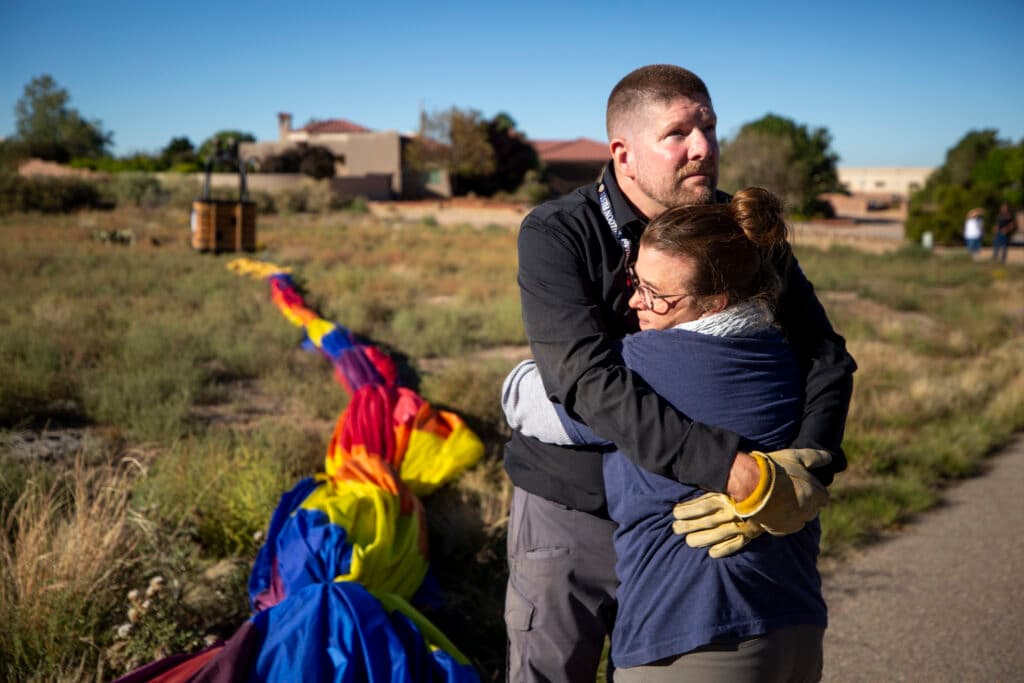
“Ballooning is very unique in that very few people do it full-time,” Bair said. “Most everybody also has a real life, and so those real lives cross a lot of different professions, a lot of different religious and political beliefs, and the idea is ballooning is a unifying sport. All of those differences just go away, and we're all here to support each other.”
While Albuquerque might be the biggest stage for pilots like Bair, every flight — whether over New Mexico’s desert or Colorado’s plains — carries the same magic.
“We meet spectators from all over the world,” Bair said. “We take the balloons to them, and that is probably one of the most rewarding things that we can do is work with the spectators and the kids to just give them that sense of wonder.”
The Albuquerque International Balloon Fiesta runs through Sunday, Oct. 12. It’s just over a five-hour drive from Colorado Springs, if you’re curious.
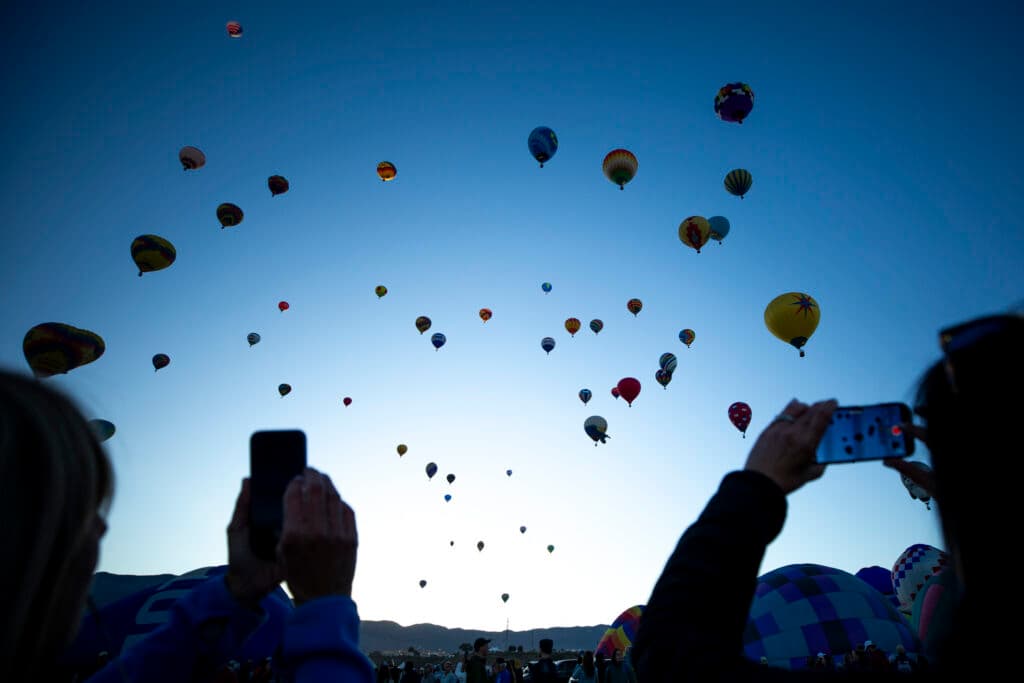
Editor's Note: This story has been updated to fix a typo in a misspelled name and add a detail about balloon cards.




